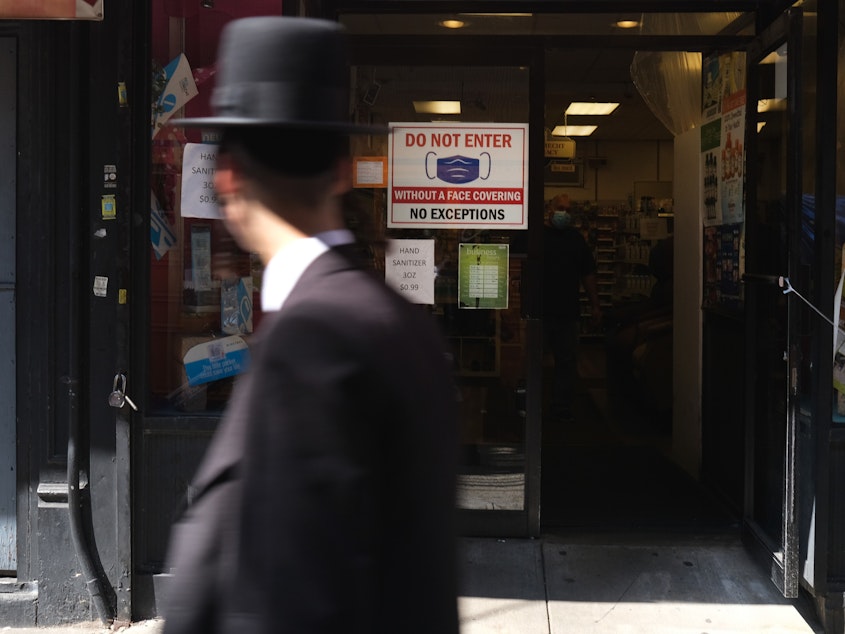How New York's Orthodox Jewish Community Is Responding To Coronavirus Safety Measures

New Yorkers have been watching with alarm as COVID-19 cases have begun to climb in the city, particularly in areas that Governor Andrew Cuomo has called hotspots, several of which are in predominantly Orthodox Jewish communities in Brooklyn and Queens.
The seven-day average of positive test results in the city ticked up to 1.46% on Wednesday, according to the New York Times. With cases on the rise, the city is targeting hotspots with additional police officers, contact tracers and city employees who will distribute masks.
"We're working with community leaders – we have been for weeks now," New York City Mayor Bill de Blasio said in a news briefing on September 23, when asked about the spread of COVID-19 in Hasidic Jewish communities. "We're getting out information, we're getting out masks, we're doing everything that we know how to do to stop the problem. So, I think we're being very clear about where the challenge is and we want to work with communities to solve it."
Avi Greenstein, the CEO of the Jewish Community Council in Borough Park, Brooklyn, is critical of De Blasio's outreach plan, and says the city has failed to work collaboratively enough with the community. He's working to distribute hundreds of thousands of masks.
"We can definitely see an increase in the number of mask wearing in the Borough Park community, the result of the community organizing, trying to encourage family members of the importance of wearing masks, and that wearing masks is better than not wearing masks," Greenstein told NPR's Ari Shapiro.
Greenstein talked with NPR's All Things Considered about COVID-19 in the Hasidic Jewish community in Brooklyn, the high holidays and more.
How are people responding to the city's enforcement and outreach efforts? ... Do you think people are being forthcoming about sharing information, with contact tracers, for example?
Well I think that it's unnecessary. When you work with this community, community leaders, you'll be at a point where enforcement will be unnecessary.
But contact tracers are something that communities all over the country are dealing with. When somebody calls and says, 'You've tested positive, tell me everybody you had contact with in the last two weeks,' do people answer that question?
Well you have to realize that this community, every community is unique. When people feel that they're being misunderstood and especially when these people were denied the collaboration that is needed by the Department of Health with proper information along the process, but when it comes to enforcement or when it comes to different various programs of the city by the Department of Health, it's not being done in a proper collaborative way. There is a way to do things in the community, and the way is to organize it through community leadership to help mobilize what needs to be done, but it has to come from a point of collaboration.
What do you think a collaborative approach would look like? Give me one example of something you wish the city had done to be a little bit more understanding.
One example would be, work with our community to help form a leadership advisory council so that we can be in constant communication every single day or on a weekly basis. And so before the city is going to announce measures for enforcement, a proper dialogue could be had.
We're just past the high holidays. These are traditionally times that people gather with families and loved ones in big groups. What's the balance you are seeing between people taking risks in order to uphold religious obligations and traditions versus making sacrifices and maybe not observing holidays as they're accustomed?
Well we're in the midst of the holiday season. And this community in general is a deeply rooted social community and a lot of our daily routine revolves around being with other people, praying with at least 10 people three times a day, but we do see an increase of mask wearing. So that when people are purchasing the items for the holidays, we would see an increase in individuals wearing masks. People are trying to do their part and hopefully we'll get the information out and we'll be at a place where the numbers go down and hopefully the community continues to stay safe and get through this. [Copyright 2020 NPR]

